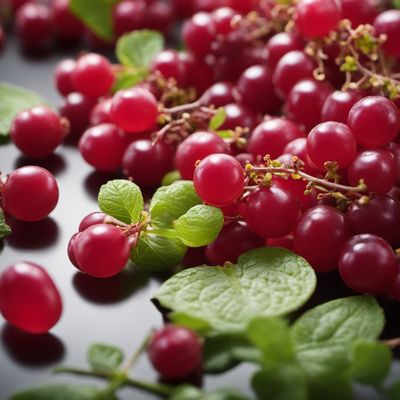
Ingredient
Juneberries
The Sweet Delight of Juneberries
Juneberries are small, round berries that range in color from red to dark purple. They have a sweet and slightly tart flavor, similar to a combination of blueberries and cherries. The berries have a soft and juicy texture, with small seeds in the center. They are often used in both sweet and savory dishes, including pies, jams, sauces, and salads.
Origins and history
Juneberries are native to North America and have a long history of culinary use among Native American tribes. They were traditionally harvested in the early summer months, hence the name 'Juneberries.' Today, they are cultivated in various regions and are enjoyed for their unique flavor and versatility in cooking.
Nutritional information
Juneberries are a good source of fiber, vitamin C, and antioxidants. They are also low in calories and fat.
Allergens
None known.
How to select
When selecting Juneberries, look for berries that are plump, firm, and evenly colored. Avoid berries that are soft, mushy, or have signs of mold. Fresh Juneberries should have a sweet aroma and a vibrant color.
Storage recommendations
To keep Juneberries fresh, store them in the refrigerator in a breathable container or a perforated plastic bag. They can be kept for up to a week. For longer storage, freeze the berries by spreading them in a single layer on a baking sheet and then transferring them to a freezer-safe bag or container.
How to produce
Juneberries can be grown in a home garden by planting the seeds or seedlings in well-draining soil and providing them with plenty of sunlight and water. They can also be purchased from farmers markets or specialty grocery stores when in season.
Preparation tips
To prepare Juneberries, rinse them gently under cold water to remove any dirt or debris. They can be eaten fresh as a snack or used in a variety of recipes. Juneberries are delicious in pies, muffins, jams, and smoothies. They can also be cooked down into a sauce or compote to accompany savory dishes like roasted meats or grilled vegetables.
Substitutions
Blueberries or cherries can be used as substitutes for Juneberries. Blueberries have a similar flavor profile, while cherries provide a slightly different taste.
Culinary uses
Juneberries are commonly used in pies, tarts, jams, jellies, and desserts. They can also be added to salads, yogurt, and breakfast dishes for a burst of flavor and color.
Availability
North America
More ingredients from this category » Browse all

Lingonberries and similar
The Tart and Tangy Delights: Exploring Lingonberries and Similar Berries

Native currant
The Indigenous Jewel

Golden currant
The Fragrant Spice of Delight

Ugniberries
The Enigmatic Delight: Unveiling the Secrets of Ugniberries

Aronia berries
The Mighty Antioxidant Powerhouse

Worcesterberries
The Tangy Delight: Worcesterberries

Sea buckthorns
The Tangy Treasure of the North

Blueberries
Bursting with Antioxidant Power: The Vibrant World of Blueberries

Bilberries (generic)
The Secret Superfood: Unveiling the Power of Bilberries

Haskaps
The Marvelous Haskaps

Other species and hybrids of genera Ribes and Vaccinium, not elsewhere mentioned
Exotic Berry Medley

European barberries
Tangy Gems: Exploring the Delights of European Barberries